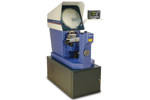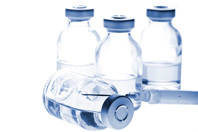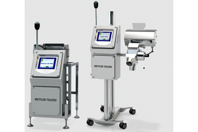INSIGHTS ON PHARMACEUTICAL INSPECTION
-
Advancing Drug Product Quality Through AVI And Future-Ready Infrastructure
Automated visual inspection (AVI) combines robotics, precision imaging, and sophisticated defect-recognition software to provide a scalable solution for expanding pipelines and rises in production volumes.
-
Why Is It Important To Have Properly Trained Visual Inspectors?
Properly trained visual inspectors are crucial for identifying defects in parenteral drugs, safeguarding patient safety and product quality.
-
Inspecting On The Edge — Understanding Punch Tip Wear
Why is a horizontal optical comparator highly recommended for tablet manufacturers as a measuring tool for punch tip inspection, and what strategies can be used to detect, reduce, and prevent tip wear?
-
Advanced Aseptic Filling Assembly Helium Integrity Testing
Helium leak testing offers unmatched sensitivity for detecting micro-leaks in single-use fill-finish systems. Learn how tighter leak thresholds can strengthen aseptic processing and regulatory confidence.
-
Unlock Smart Production: The Key Role Of Checkweighing12/16/2024
In today's fast-paced production, precision checkweighing is crucial. Discover how smart algorithms, real-time analysis, and automation optimize performance and minimize downtime.
-
Are You Missing An Important Stage In Raw Material Product Inspection?4/23/2024
Learn why product inspection is crucial in ensuring safety and quality control for food manufacturers.
-
Qualicaps Virtual Pharma Expo September 2025: Oral Solid Dose Manufacturing And Packaging9/18/2025
Explore how a new capsule inspection system helps manufacturers overcome labor shortages, increase throughput, and maintain quality while meeting global compliance standards.
-
A Powerful Non-Destructive Tool For Tablet Characterization10/6/2025
Discover how X-ray micro-CT provides vital, non-destructive analysis of a tablet’s internal 3D physical structure. This structural insight is essential for troubleshooting defects and confirming performance.
-
A Closer Look At Inspection Systems In Tablet And Capsule Production8/29/2024
Walk through the rigorous inspection process pharmaceutical products undergo to ensure safety and quality, from granulated ingredients to packaging.
PHARMACEUTICAL INSPECTION SOLUTIONS
-
Until now, inspecting vials and syringes has required two separate machines. Discover a high-quality inspection solution for small batches of syringes and vials on a single machine.
-
METTLER TOLEDO Safeline pharmaceutical metal detector systems are designed to offer maximum flexibility in process areas. A compact footprint enables systems to be inserted into areas where space is restricted. Robust, low profile, fully rotating castors provide ease of mobility, enabling the system to be used in multiple locations. Flexibility is further enhanced by the ability of the metal detection head to be adjusted easily (without the need for tools) in all three axes to suit any configuration.
-
The Thermo Scientific Quickfit metal detector conveyors are a high quality material handling solution for the APEX metal detector family.
-
Flawless tablet production starts with precision CT scanning. Uncover hidden defects, ensure product integrity, and deliver quality every time.
-
Efficient, customizable, intuitive use
Advanced bottom inspection of a variety of packages. The system supports customized lighting and can be extended with top cameras for further applications such as seal contamination inspection.
Effective Bottom Inspection
Supporting up to 400 ppm, capture the nuances associated with various product shapes or sizes where a larger field of view is required.
Application Based Design
Cameras and advanced lighting options help overcome challenging applications where wet, reflective, or uneven surfaces interfere with imaging.
Intuitive Software
Powerful CIVCore software offers a range of inspection options for easy setup and configuration.













